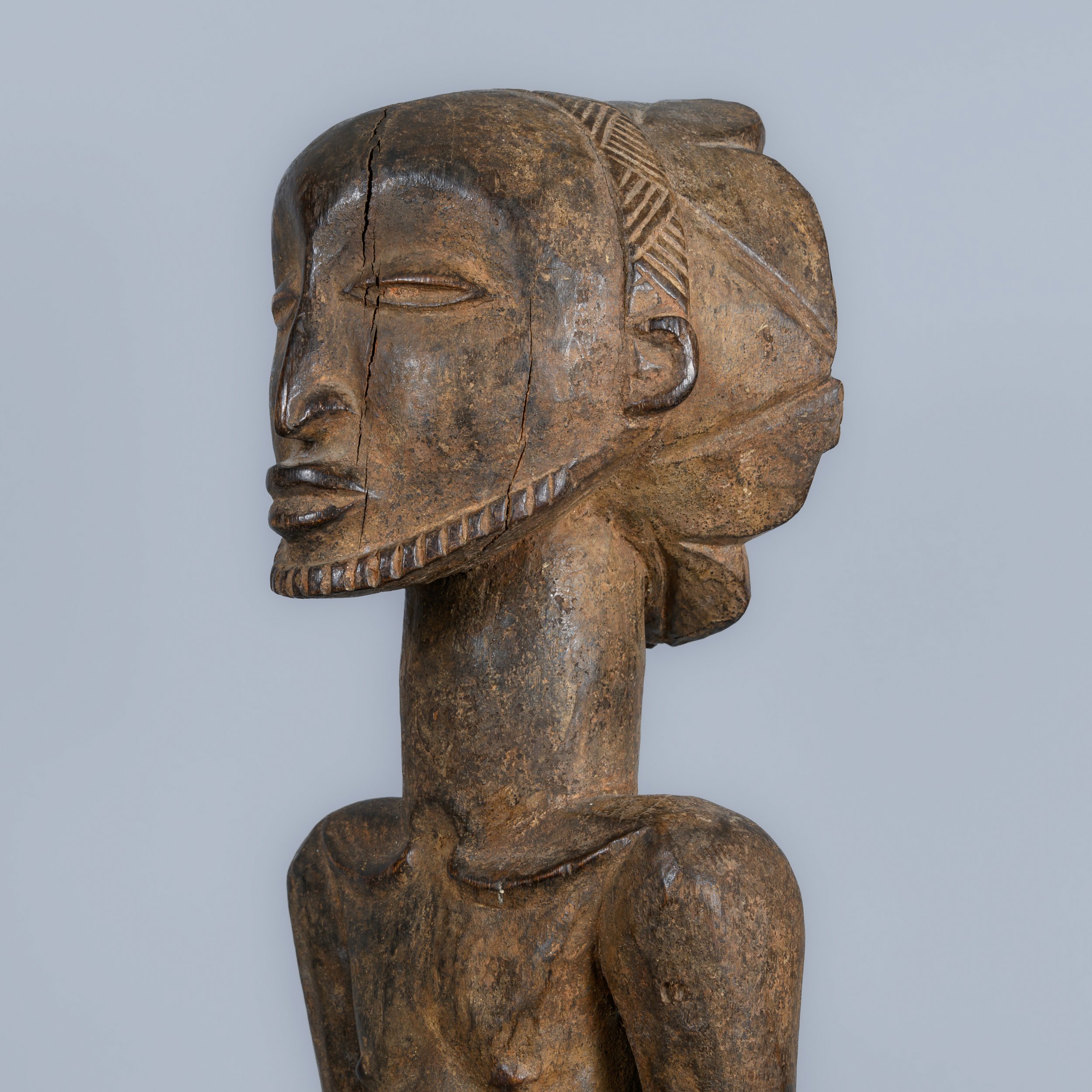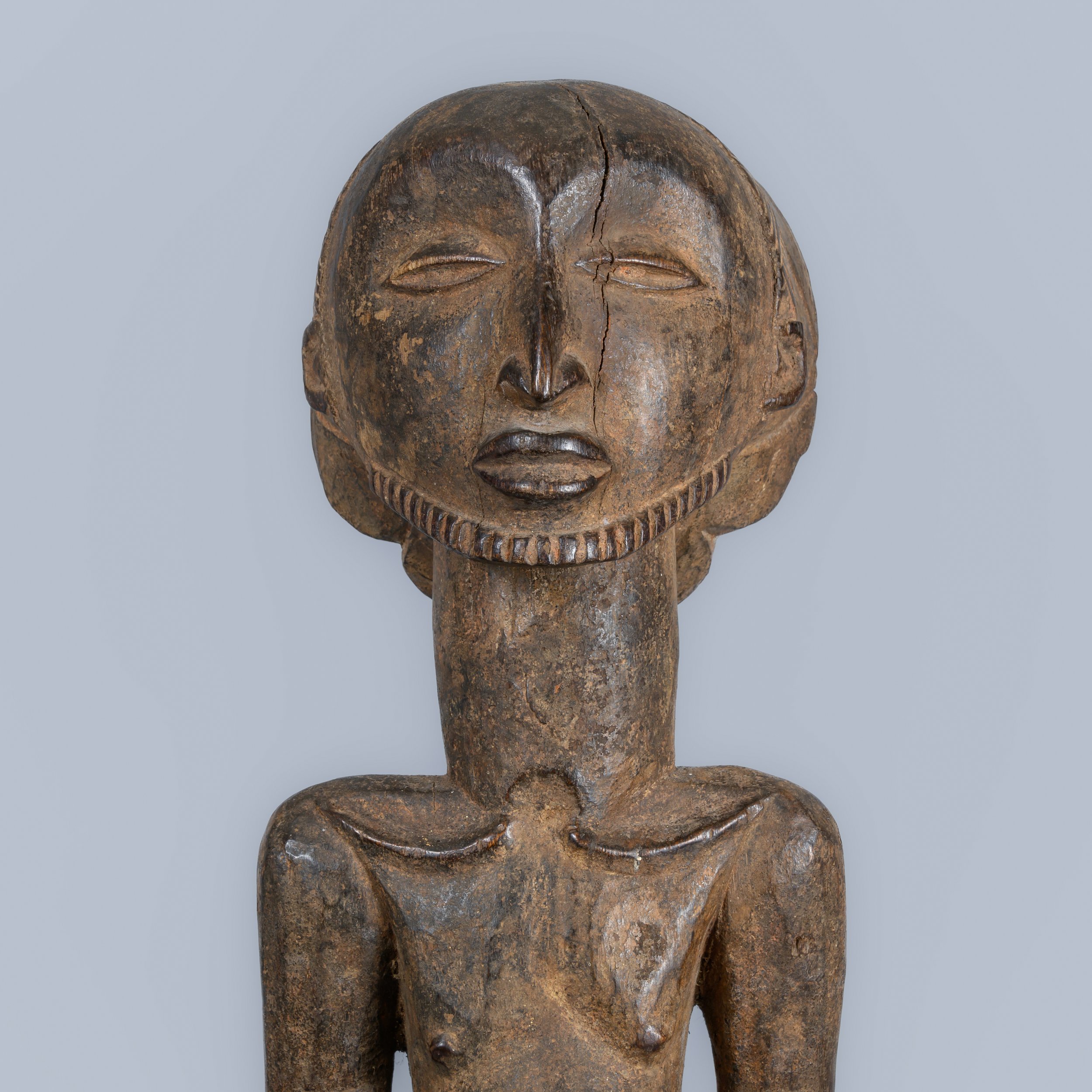



















Hemba Singiti figure, Democratic Republic of the Congo
Southeastern Congo, Sayi region, possibly Mahundu clan from the Mbeya, Nkundu or Kitenge-Tenge village.
25in tall by 8in wide (63.5cm by 20.3cm)
wood, pigment
1940s-1950s
collection of Chris Doane, CO
Wooden statues called singiti commemorated and honored the lifetime accomplishments of a deceased male ancestor. They were shelters of the spirits of the clan's ancestors through wich the Hemba could maintain a direct and lasting engagement with them. A Hemba chief inherited a series of such works which acted as a spiritual mediator between the living and the dead and were preserved together in a shrine where they linked the present ruler with his predecessor(s) and underscored the legitimacy of his authority. According to the Hemba scholar François Neyt, each important family generally possessed three or four ancient statues which preserved the memory of the genealogy. Not every Hemba chief was honored with such a depiction. Such commissions were divinely sanctioned when a sitting chief was visited in a dream by one of his predecessors and this was interpreted as a sign that a singiti figure should be carved in that individual’s honor. Hemba artists emphasized two bodily passages of such representations – the head as the site of one’s intellect where knowledge is taken in through the eyes and the stomach where the umbilicus is the point of connection with one’s extended lineage. In the precolonial era, these commemorative statues, placed at the political and spiritual epicenter of all Hemba communities, were collectively invoked to intervene for the well-being of the villagers. The presence of singiti was essential to the establishment of a sense of unity and social cohesion in the village.
These sculptures were not conceived as a portrait in a literal sense. Alisa LaGamma notes that although these sculptures were intended to represent "specific former leaders in a relatively naturalistic idiom, the representations themselves do not literally reproduce those individuals' specific physiognomies." (LaGamma, ibid., p. 266). Instead the ancestor was represented through an idealized rendition of the qualities which the Hemba valued in their leaders, with the ancestor's "likeness" revealed by his deeds. Although the Hemba artist would follow certain accepted canons of representation, each sculpture is highly individualized, with the head, and particularly the face, the source of distinction, rather than the posture or body.
I was able to identify the specific region where I believe this figure comes from due to the representation of the collar bone on the figure, which is not a common feature. In the book “La Grande Statuaire Hemba du Zaire” by Francois Neyt he calls out the fact that figures with collar bones represented like this come from the Sayi region. There aren’t many documented examples of figures with collar bones like this, but in the ones that are documented they got down to the clan and village level on the origins of figures with this specific feature. Hemba figures are not one of my areas of in-depth knowledge so I had this one vetted by a reputable source before offering it here. It was stated the patina is not deep enough for an earlier one (meaning late 19th - early 20th century) but it looks like it is supposed to look. It was given an age range of 1940’s - 1950’s timeframe.
Inquire using the form at the bottom of this page.
Click/Tap on any image below to bring up the image viewer.
INQUIRE
If you have questions, requests for high resolution photos, or would like to inquire about purchasing this object please use this form.

